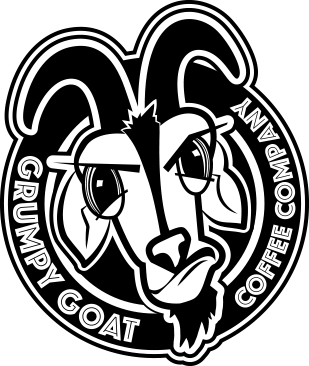How to Brew the Perfect Cup of Coffee
A “Good Cup of Coffee” really is a personal thing – the perfect way to make it is how you like it.
All it takes is a keen sense of adventure, a few fundamentals and a little guidance to help you perfect your technique. We suggest you to experiment with different roasts, different origins, and/or different preparation methods.
Here are our tips and tricks to brew your perfect cup of coffee.
Make sure that your tools — from bean grinders and filters to coffee makers— are thoroughly cleaned after each use.
 Your equipment are your tools — a little TLC makes all the difference. Your bean grinders and filters to your coffee maker— be sure to thoroughly clean them after each use.
Your equipment are your tools — a little TLC makes all the difference. Your bean grinders and filters to your coffee maker— be sure to thoroughly clean them after each use.
Rinse with clear, hot water and wipe down thoroughly and dry with an absorbent towel. It’s very important to check that no grounds have been left, this will avoid a build-up of coffee oil (caffeol), which can make future cups of coffee taste bitter and rancid.
If you’re using a single-serve coffee maker,
 A perfect cup of coffee starts with great beans. The quality and flavor of your coffee are not only determined by the brewing process, but also by the type of coffee you choose. There is a big difference between roasts, so check out our roasting types guide.
A perfect cup of coffee starts with great beans. The quality and flavor of your coffee are not only determined by the brewing process, but also by the type of coffee you choose. There is a big difference between roasts, so check out our roasting types guide.
Some of the factors that affect the flavor include:
- The country and region of origin
- The variety of bean – arabica, robusta – or a blend
- The roast type
- The texture of your grind
There is no right or wrong answer and there are plenty of choices.— For example, you can choose a dark, flavorful espresso roast coffee and still have it ground to be brewed in a drip system.
Have fun, enjoy and experience the different combinations.
 Coffee should be purchased as soon as possible after it’s roasted. Fresh-roasted coffee is the key difference to a quality brew, so buy your coffee in smaller amounts (a good rule of thumb is to buy enough that you will consume in one to two weeks).
Coffee should be purchased as soon as possible after it’s roasted. Fresh-roasted coffee is the key difference to a quality brew, so buy your coffee in smaller amounts (a good rule of thumb is to buy enough that you will consume in one to two weeks).
The greatest enemies of coffee beans are air, moisture, heat, and light.
To preserve your beans’ fresh roasted flavor as long as possible, store them in an opaque, air-tight container at room temperature. Coffee beans can be beautiful, but avoid clear canisters which will allow light to compromise the taste of your coffee.
Keep your beans in a dark and cool location. A cabinet near the oven is often too warm, and so is a spot on the kitchen counter that gets strong afternoon sun.
Coffee’s retail packaging is generally not ideal for long-term storage. If possible, invest in storage canisters with an airtight seal.

Coffee begins to lose freshness almost immediately after roasting. Try to buy smaller batches of freshly roasted coffee more frequently – enough for one or two weeks.
Exposure to air is bad for your beans. If you prefer to keep your beans in an accessible and/or attractive container, it may be a good idea to divide your coffee supply into several smaller portions, with the larger, unused portion in an air-tight container.
This is especially important when buying pre-ground coffee, because of the increased exposure to oxygen. If you buy whole beans, grind the amount you need immediately before brewing.

Freshness is critical to a quality cup of coffee. Experts agree that coffee should be consumed as quickly as possible after it is roasted, especially once the original packaging seal has been broken.
While there are different views on whether or not coffee should be frozen or refrigerated, the main consideration is that coffee absorbs moisture – and odors, and tastes – from the air around it, since it is hygroscopic (bonus vocabulary word for all the coffee geeks out there).
Most home storage containers still let in small amounts of oxygen, which is why food stored a long time in the freezer can suffer freezer burn. Therefore, if you do refrigerate or freeze your beans, be sure to use a truly airtight container.
If you choose to freeze your coffee, quickly remove as much as you need for no more than a week at a time, and return the rest to the freezer before any condensation forms on the frozen coffee.
Freezing your beans does not not change the basic brewing process.
Never reuse your coffee grounds to make coffee. After brewing, the desirable coffee flavors have already been extracted and leave only the bitter ones behind.

If you buy whole coffee beans, be sure to grind your beans as close to the brew time as possible to maximize the freshness. A burr or mill grinder is best so that the coffee is ground to a consistent size.
A blade grinder is not as consistent as some coffee will be ground more finely than the rest. If you grind your coffee at home with a blade grinder, have it ground at the store with a burr grinder. You will be surprised at the difference!
The size of the grind impacts the taste of your coffee. Does your coffee taste bitter? It may be over-extracted, meaning it is ground too fine. Does your coffee tastes flat? It may be under-extracted, meaning your grind is too coarse.
Whenever having coffee ground to order, remember to to mention exactly how you will be brewing it. Are you using a French Press? A flat or cone drip filter? A gold mesh filter? They will grind it specifically for your brewing preference.
All About The Water!!!
Water is very important to the quality of your coffee. Use filtered or bottled water and avoid the strong odor or tastes from additives such as chlorine.
If you’re using tap water, let it run a few seconds before filling your coffee pot, and be sure to use cold water. Avoid distilled or softened water.
 The most common guideline is called the “Golden Ratio” – one to two tablespoons of ground coffee for every six ounces of water. This can be adjusted to suit individual taste preferences.
The most common guideline is called the “Golden Ratio” – one to two tablespoons of ground coffee for every six ounces of water. This can be adjusted to suit individual taste preferences.
Check the lines or indicators on your brewer to see how they actually measure. Remember, some water is lost to evaporation in certain brewing methods.
 For optimal extraction, your brewer ideally should maintain a water temperature between 195 to 205 degrees Fahrenheit. Colder water will result in flat, under-extracted coffee, while water that is too hot will also cause a loss of quality in the taste of the coffee. (With the exception of cold brew which does not need any heat.)
For optimal extraction, your brewer ideally should maintain a water temperature between 195 to 205 degrees Fahrenheit. Colder water will result in flat, under-extracted coffee, while water that is too hot will also cause a loss of quality in the taste of the coffee. (With the exception of cold brew which does not need any heat.)
When brewing coffee manually, let the water come to a full boil, but do not over boil. Turn off the heat source and allow the water to rest a minute before pouring it over the grounds.
Always allow your coffee – or any hot beverage – to reach a comfortable temperature before enjoying (specifically below 140 degrees Fahrenheit).
 The amount of time that the water is in contact with the coffee grounds is an important factor on its flavor and varies on how you brew.
The amount of time that the water is in contact with the coffee grounds is an important factor on its flavor and varies on how you brew.
Drip system — the contact time should be approximately 5 minutes.
French Press — the contact time should be 2-4 minutes.
Espresso — (especially brief brew time) — contact time is only for 20-30 seconds.
Cold brew — should steep overnight (about 12 hours).
If you are not happy with the final taste of your brew, you’re likely either:
- Over-extracting– the brew time is too long
- Under-extracting – the brew time is too short
Experiment with the contact time until you get your preferred taste.
Enjoy your coffee!
Coffee begins to lose its optimal taste immediately after brewing, so only make as much coffee as you’ll drink. To slightly extend your Coffee life, it can be poured into a warm, insulated thermos but still should be consumed within one hour.
Old coffee is not necessarily dangerous to drink, it is just not very tasty.
Enjoy your coffee and experience the entire process from brewing to the last drop in your cup. Smell the aroma, discover the flavors in every sip. There are many factors that are instrumental to enjoying the Perfect Cup of Coffee.


